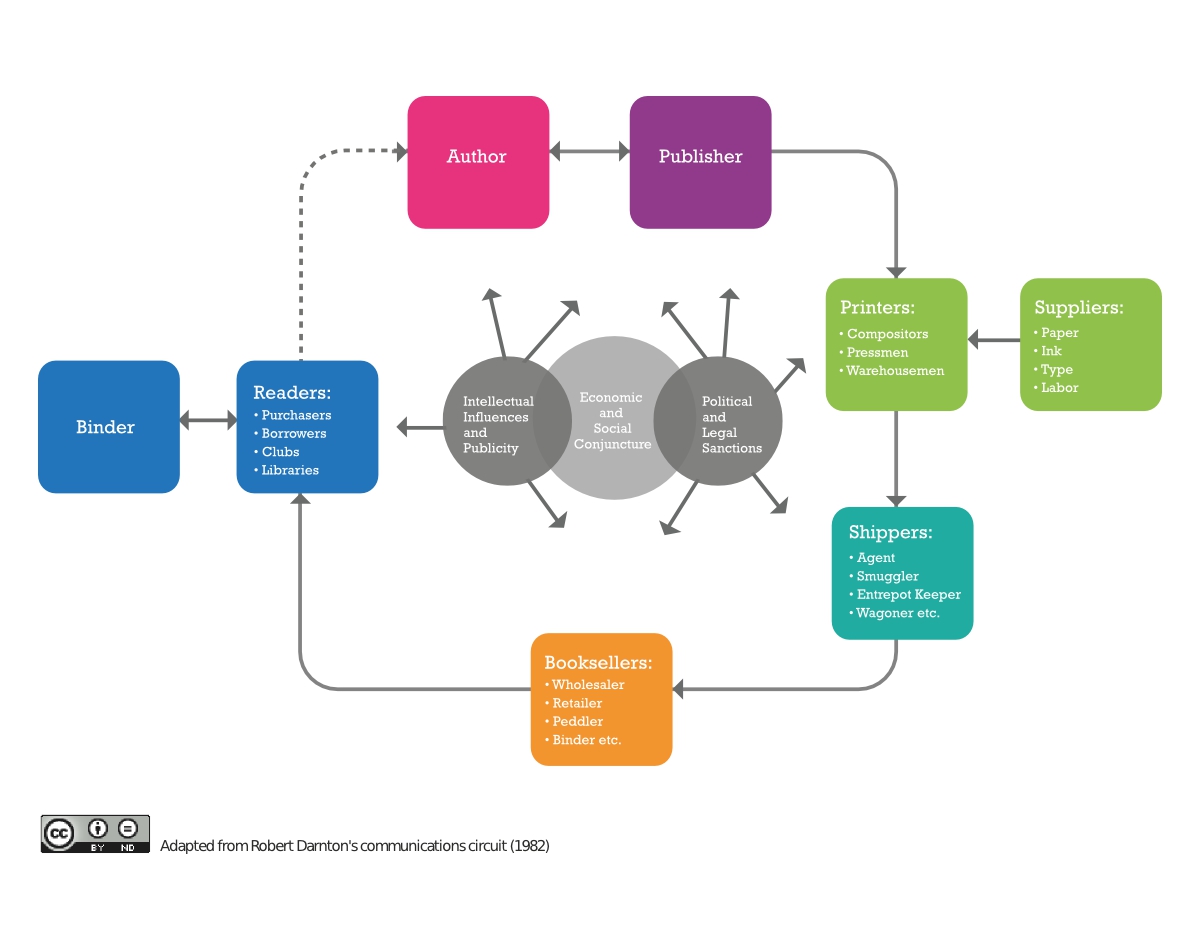Research & Infographics
Robert Darnton’s influential model of the ‘communications circuit’ maps the life cycle of the printed book and has been a cornerstone of the disciplines of book history and publishing studies since its conception. However, the advent of digital technologies and their transformation of the publishing industry demands a re-examination of the model advanced by Darnton in the face of the industry’s increasing disintermediation. Though Darnton’s communications circuit does not posit a hierarchy as such, authority is reinforced by the flow of different modes of capital, a model that in the context of the publishing industry is known as the value chain. As a consequence of the research conducted as part of this project, Padmini Ray Murray & Claire Squires have created a series of infographics based on Darnton’s model, updating it to reflect the different models of publishing that now co-exist in the media eco-system.

The primary objective of the project is to examine how the recent conflation of roles (such as those of the author and publisher), increasing redundancy of other roles (such as the printer), and consequences such as readers becoming content-creators across social media as an act of reading reception, all contribute to a new publishing eco-system. These changes have also resulted in a shift of power being wielded by intermediaries such as technology companies as they enforce and restrict access through use of digital rights management, proprietary software, and censorship through disallowing certain kinds of content to be made available on their platforms. Despite the ease with which digital texts can be produced, their delivery can still be an expensive and time-consuming process for smaller companies and individuals and access can be restricted to those readers who can afford the appropriate device to read the content.
In order to demonstrate how the communications circuit and value chain are being dismantled by these factors the project follows two strands of inquiry.
Strand 1
The first, through a research review and a series of case studies based on business models that have emerged as a direct response to the shift from print to digital, seeks to answer the following research questions:
What element of the communications circuit model does this business model transform and how?
- What is the significance of this business model for authorship, audiences and access?
- How sustainable is this business model in the long term?
The case studies draw on interviews and data gathered from both primary and secondary sources. They are evaluated based on how these business models challenge prevailing notions of authority in the value chain, such as the publisher as cultural gatekeeper. The case studies over a range of publishing activities such as crowdfunding, crowdsourcing content, digital production and distribution, convergence marketing and the live literary event. While an objective of this research is to illustrate the possibilities digital technologies offer creators, producers and consumers, it also critiques these models from the perspectives of sustainability and ease of access in order to assess the shifting locations of empowerment in these transactions.
Strand 2
The second strand is an empirical inquiry into the research, development and making of a digital publication, an iPad app, in order to::
- test, demonstrate and evaluate the use of new technologies;
- analyse the extent to which new technologies can empower small publishers and individuals and in which they can disrupt the communications circuit and value chain;
- interrogate the notion of the book i.e. what determines the status of the book as information container as opposed to artefact, especially in an age of granular content which allows the book object to be dismantled, reordered and repurposed.
By drawing these strands of investigation together, the aim of the project is to present an empirically sound, theoretically robust adaptation of Darnton’s communications circuit and the publishing value chain, and their fate in the digital age.
Latest Tweets
Tweets by @@stirpublishing


